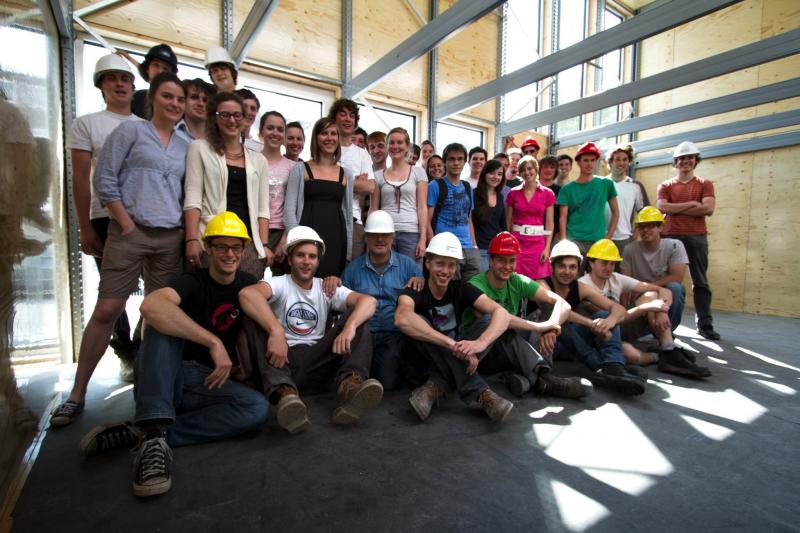Belgium’s Ghent University Prepares Its E-Cube for Solar Decathlon 2011
Friday, June 10, 2011By Erik Hyrkas
Editor’s Note: This entry has been cross-posted from DOE’s Energy Blog.
In honor of the U.S. Department of Energy Solar Decathlon—which challenges 20 collegiate teams to design, build, and operate solar-powered houses that are cost-effective, energy-efficient, and attractive—we are profiling each of the 20 teams participating in the competition.
Ghent University’s unique two-story house could be an international star at the U.S. Department of Energy Solar Decathlon this year because of the Belgium team’s innovative, ultra-efficient, passive design of the E-Cube.

Photo of Ghent University’s E-Cube, under construction in Belgium (Courtesy of the Ghent University Solar Decathlon Team)
The E-Cube, named for its cube-like shape, features a clean and compact boxy exterior, complimented by a very spacious interior for a family of four (including two children) with two bedrooms, one bathroom, a kitchen, and living areas. Team Belgium, from Ghent University, founded the house on basic principles focusing on modularity and passive house standards, structural flexibility, and affordability, which are evident in every part of the design.
An important aspect of the E-Cube is its simple, do-it-yourself (DIY) modularity. The house is designed as a pre-engineered kit that can be easily constructed by communities without specialty workers or help from outside financial institutions. The internal structure is a basic industrial pallet racking system that keeps access and affordability in mind along with standard building codes. The E-Cube is plug-and-play. Because the entire structure is built from a kit, hooking up the solar panels and other technical components requires no specific expertise.
Computer-animated walkthrough of E-Cube
Ghent University’s house also meets passive house standards with air-tight insulation, energy-efficient windows, and the ability to heat itself without a conventional heater. This design reduces costs and the number of solar panels needed to power the house’s utilities. The house is also structurally flexible, with wall panels that are adaptable and an expandable pallet racking system. Thus, the E-Cube can be reconfigured, possibly to even add more space.

Team Belgium inside its E-Cube (Courtesy of Team Belgium’s Facebook page)
Most of all, the E-Cube is marketed as an attractively affordable option for a solar home, from every aspect. The entire pre-engineered, DIY design makes construction a low-cost, no-brain effort. It can also be constructed at the owner’s pace in phases, making the capital investment minimal. And the passive design and solar panels on the roof eliminate heating and cooling costs altogether once completed.
This is Ghent University’s first Solar Decathlon, and its completed design should be a competitive addition to the 2011 competition. If you’re interested in checking out its website, chose the “EN” icon in the top right corner of the screen to translate the page to English. Feel free to check out the team’s Facebook page and view more pictures on their Twitpic account.
Erik Hyrkas is a correspondence writer for the Department of Energy’s Office of Energy Efficiency and Renewable Energy.
Tags: Solar Decathlon, Solar Decathlon 2011, Team Belgium, Teams
